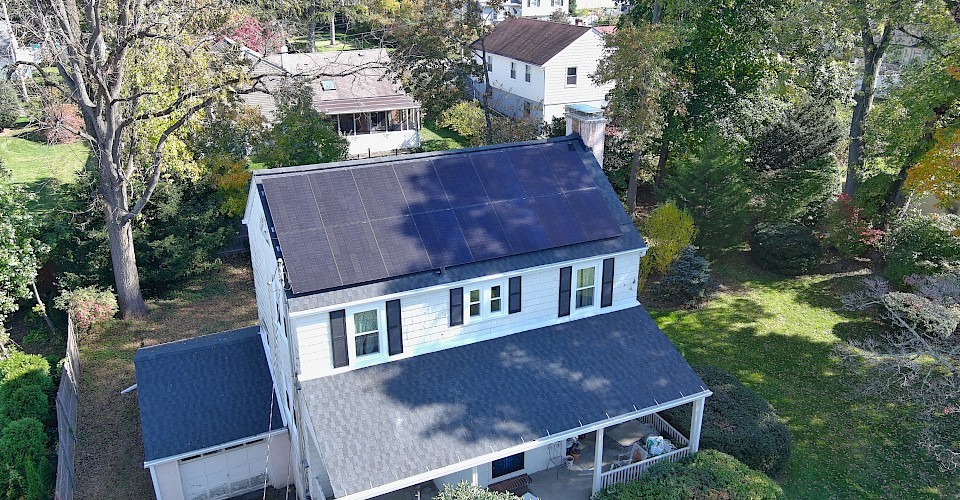Solar Panels for the Tree-dense Rivertowns
It’s rare for a home to have a perfectly unshaded, south-facing roof in the Rivertowns. Shade from the area's many beautiful trees and foliage passes over most roofs at one time or another to different degrees. That’s why—unlike many other solar contractors—we use micro inverters on all of our residential installations. Not only are micro inverters warrantied for the same 25 year length as the panels, they also turn each panel into a standalone DC to AC conversion point. This means that if one panel gets shaded or stops working, the output for the entire system is not lowered, because the panels are wired to a single string inverter, as is the case for many systems installed by national solar companies looking to cut costs.
Further, we make sure to give you as accurate an estimate as possible using panel production modelling software, taking into account potential shading from nearby trees, buildings or other structures, considering how they will affect your output, ROI, and ultimately, whether or not solar remains a good financial investment.
Return on Investment
The average return on investment for a solar system in New York is 7 years. So after 7 years, on average, you will begin to see positive net returns based on the total system cost. Given that average system life is around 30 years, that’s 23 years of positive returns.
Every kilowatt of power you generate from your solar panels is one less kilowatt you will have to pay your utility company for. You may be able to offset your usage entirely, depending on available roof space, shade, roof orientation, and average electricity consumption. But if eliminating your bill is not possible, you may still be able to lower your bill significantly.
For example, if your current average electricity bill is $200 and you install a system that offsets 80% of your annual usage, your post-installation bill will be $40 dollars, resulting in an annual savings of $2,000.
Raise the value of your home
According to an April 2019 study by Zillow.com, New York Metro area homes with solar systems have a 5.4% higher resale value than comparable homes without solar. That’s roughly an additional $37,800 for the median valued home in Westchester County.
Solar is the only value-adding home addition that does not increase the tax liability on your property.
Protect against rising electricity bills
- According to the Energy Information Administration, residential electricity rates have increased nationally by around 15% in the last 10 years. Meanwhile the ten-year inflation rate is about 2.28%, according to the United States Federal Reserve. In the Con Ed region, the delivery rates have increased by nearly 80% in the past ten years, from 8 cents a kilowatt hour to 14 cents.
- By going solar, you pay less of or completely offset the rising cost of electricity.
Environmental Benefits
Solar’s lifetime emissions per kwh are orders of magnitude lower than that of fossil fuels, though they’re not zero, since fossil-fueled mining and manufacturing are part of the current solar supply chain. It’s so well known as to become hackneyed that fossil fuel driven energy production leads to pollution and climate change.
Unlike utility scale solar farms, distributed (rooftop) solar does not require the clearing of vast tracts of wilderness. Rooftop solar also makes for a more resilient grid, as thousands of tiny power plants are constantly supplying electricity, instead of one large one.
Get In Touch!
Have questions? Use this form to send us a message, and we'll reply within 24 hours.




